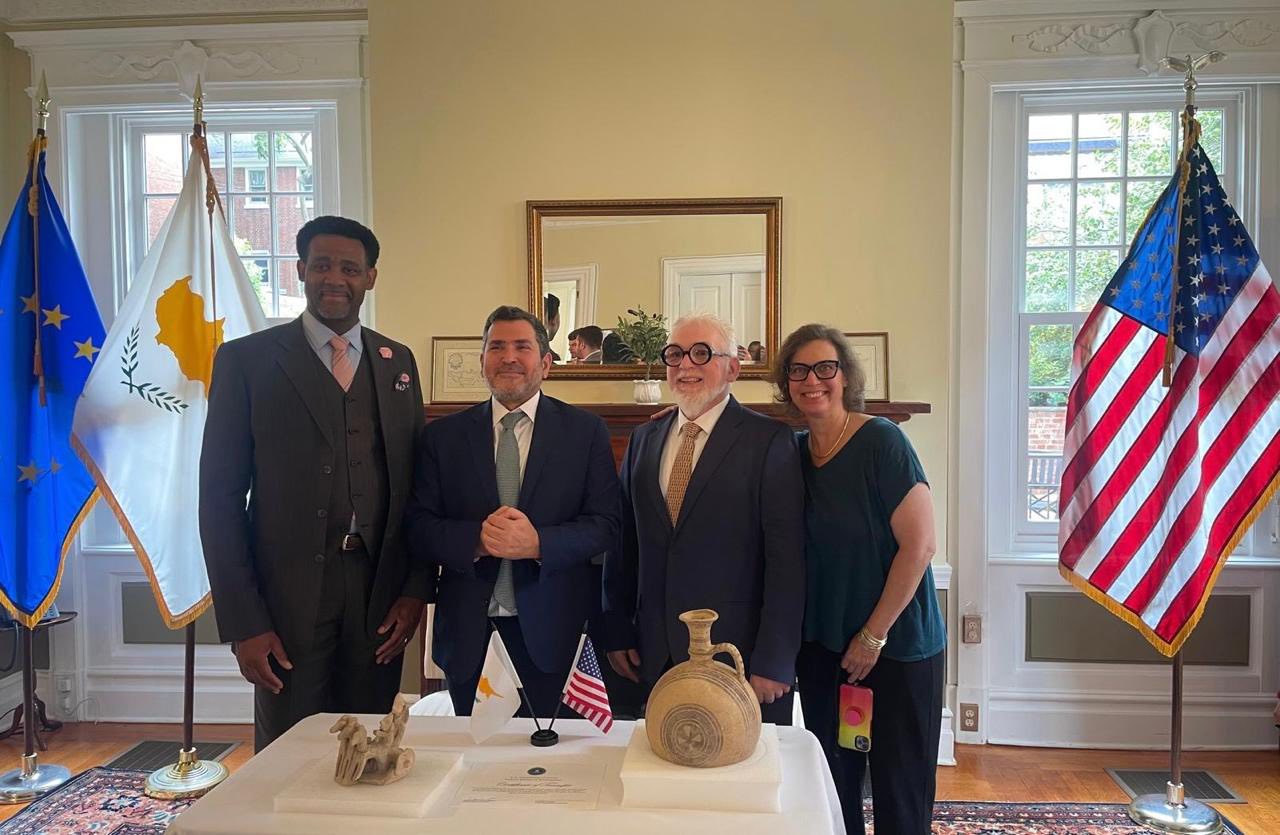
Newsroom
Two ancient Cypriot artifacts, a rare 2,600-year-old chariot sculpture and a centuries-old ceramic flask, have been formally returned to Cyprus after years abroad in a small but powerful ceremony held at the Cypriot Embassy in Washington.
The repatriation marks yet another milestone in the ongoing cooperation between Cyprus and the United States in the fight against the illicit trafficking of cultural heritage.
The artifacts, a Cypro-Archaic I quadriga chariot, dating back to 600 BC, and a Cypro-Geometric/Archaic flask, dated around 750 BC, were voluntarily surrendered by Art of Eternity Gallery in New York. Both items had made their way into the art market over the years but will now be returning home.
Cyprus’ Ambassador to the U.S., Evangelos Savva, personally thanked the gallery's owner and director, Howard Nowes, and director Dara Mayers, who were present at the event. He called the gesture an act of goodwill that supports Cyprus' decades-long efforts to recover its stolen cultural treasures.

“We’re deeply grateful for the voluntary return of these precious antiquities,” Savva said, praising both the gallery’s cooperation and the long-standing partnership with the U.S. authorities, particularly the FBI and Department of Justice, in protecting cultural heritage.
FBI International Operations Division Section Chief David Lewis echoed the sentiment, highlighting the collaboration as a model for international efforts to track and recover stolen artifacts.
The repatriation was made possible under the bilateral agreement between Cyprus and the United States titled “Imposition of Import Restrictions on Pre-Classical and Classical Archaeological Objects and Byzantine and Post-Byzantine Period Ecclesiastical and Ritual Ethnological Materials.” The agreement, renewed over the years, provides legal teeth to Cyprus’ fight to reclaim artifacts that have been looted or illegally exported.
Though modest in size, the ceremony underscored something larger: the shared responsibility to safeguard human history.
“These aren’t just museum pieces,” said one official. “They’re part of Cyprus’ identity, and they’re finally going home.”































